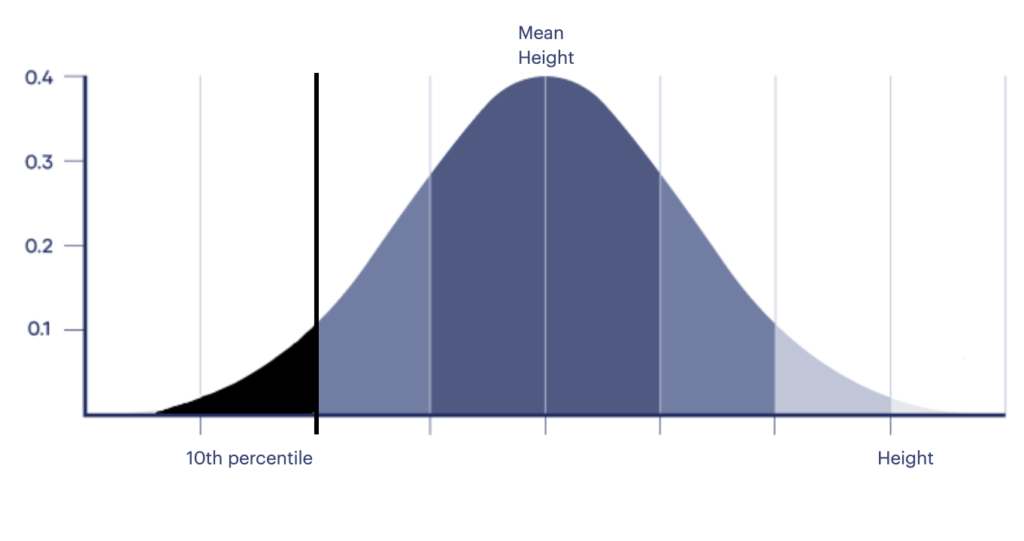Some adults are taller than others. “Normal adult height” is hence a range, and can be modelled on a normal distribution, also known as a bell curve. This means that a few people will be much shorter than average, a few people will be much taller than average, and a much larger group of people will be closer to the average height. The term “normal height” is a statistical one, and the cut off chosen is ± 2 standard deviations from the average height, which on a normal distribution means that the normal range of heights is from about the 3rd to the 97th centiles.

Some people have short stature due to a medical condition, such as a bone dysplasia, achondroplasia (a type of dwarfism), or growth hormone deficiency. Those less than the 3rd percentile without a known medical cause, as termed simply as having “short stature”.

Distribution of normal heights is different between sexes, and also different between cultural and ethnic groups.
What is Height Dysphoria?
“Height dysphoria” is a psychological burden caused by a dissatisfaction with one’s height (Lee, 2021) . It may or may not be related to a person’s actual height or height relative to their cultural group. It is variably defined in the literature, some authors saying that it only applies if it “affects a person’s mood most of the time”. Height Dysphoria is not a recognized diagnosis in the DSM-IV.
Often people living with height dysphoria seek stature lengthening treatment to gain height. Studies have been published demonstrating short term increases in self-esteem following stature lengthening, in this population, however the longer term results are less clear.
What is Body Dysmorphic Disorder?
Body Dysmorphic Disorder (BDD) is defined by the DSM-V as a preoccupation with some imagined defect in physical appearance, or a gross exaggeration of a slight physical anomaly. In order to meet criteria for diagnosis, the preoccupation must be excessively time-consuming and cause significant distress or impairment in functioning. It can manifest as a preoccupation with skin features, body shape, height, or other body features, and often people living with BDD suffer from such preoccupation in several areas. BDD was previously called dysmorphophobia. Some of the features of BDD overlap with those of eating disorders, as well as Obsessive-Compulsive Disorder.

The most successful forms of treatment for BDD are cognitive and behavioural therapy. It is generally accepted that stature lengthening is not appropriate in the context of suspected or diagnosed body dysmorphic disorder
